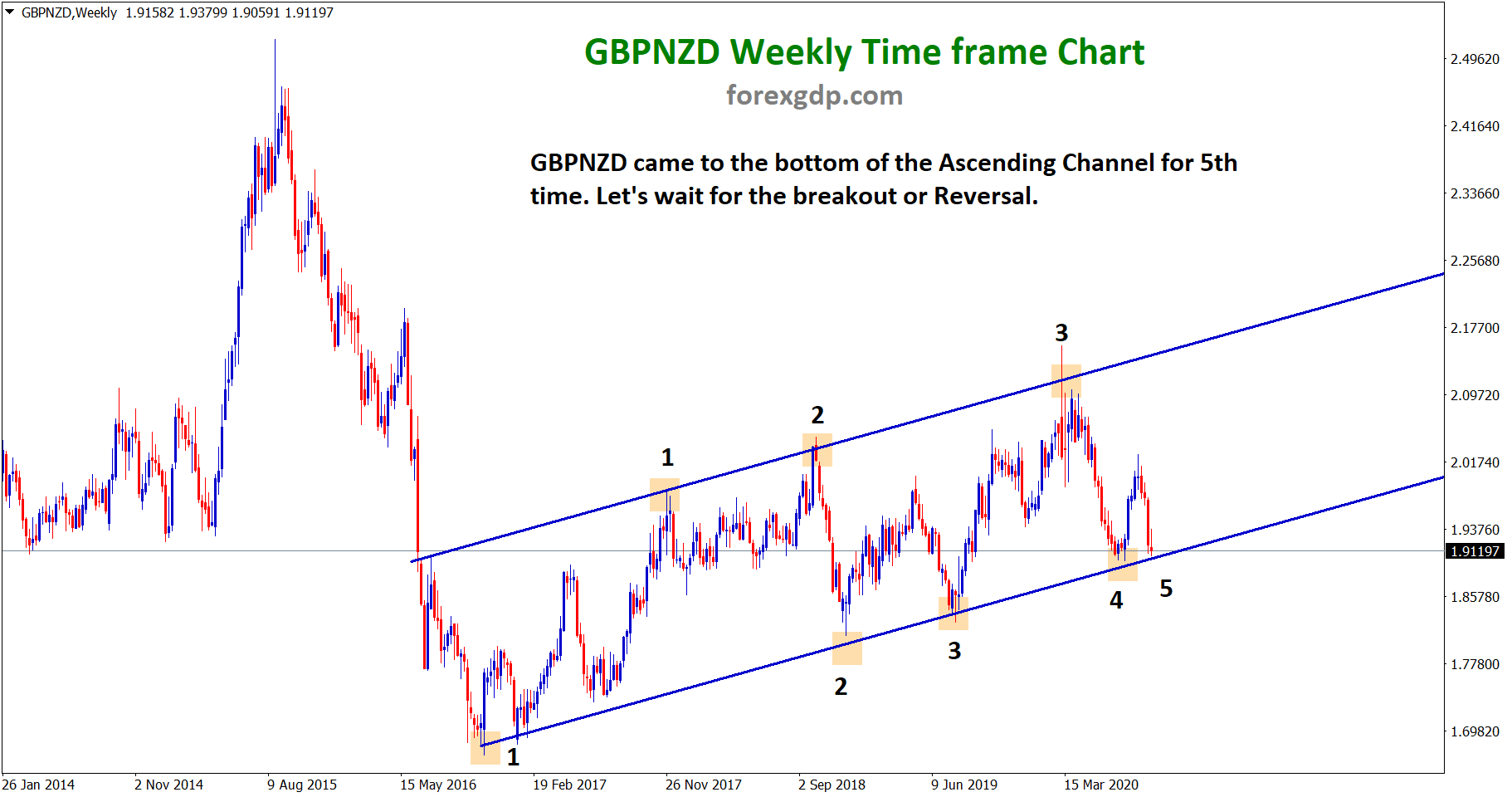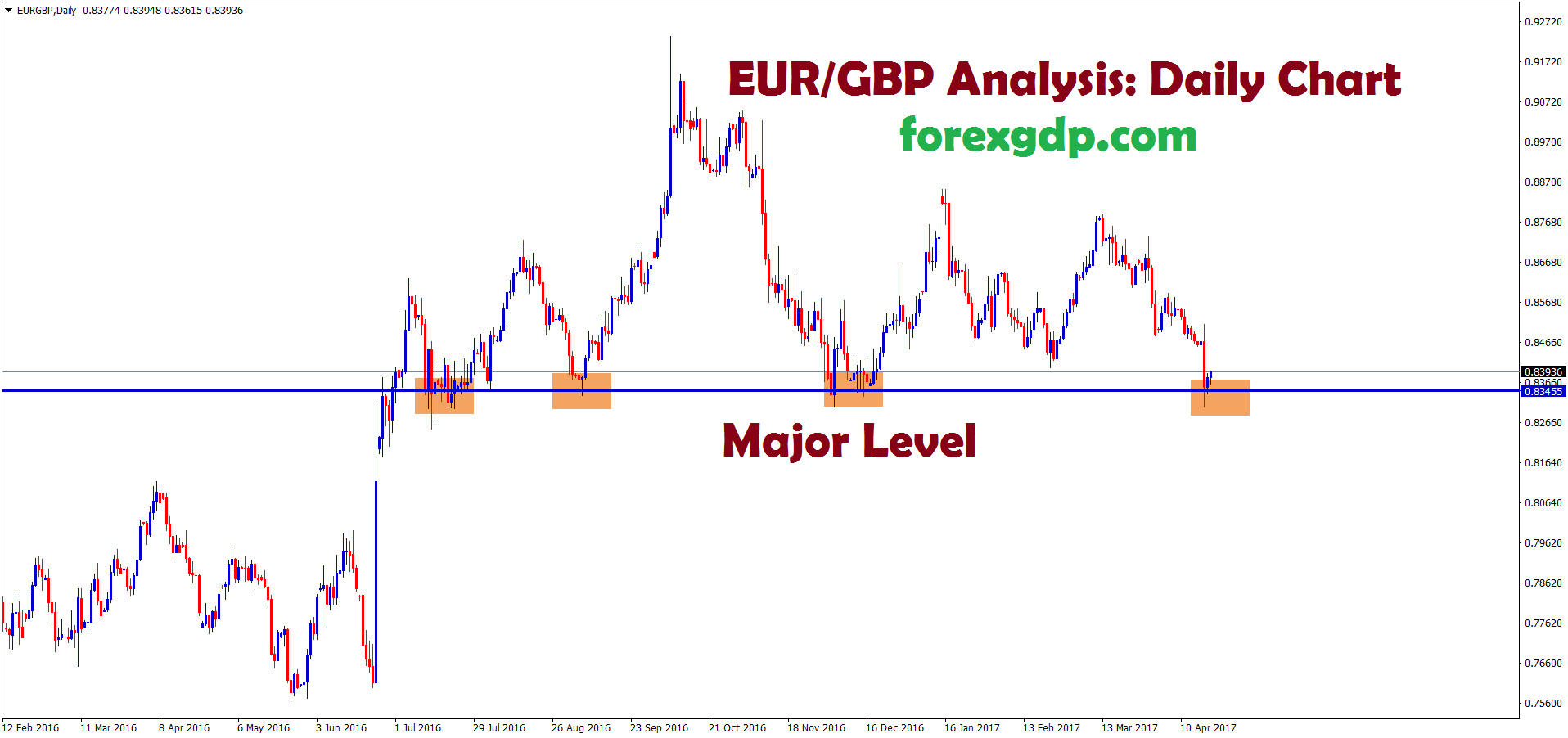NZD: NZD/USD Draws Sellers Below 0.5900 After NZ Employment Data
The NZ unemployment rate at Q1 came at 4.0% versus 4.3% printed in Q4 2023 and 4.2% is expected, Employment change printed at -0.20% decline from 0.40% rise in the previous quarter and 0.30% rise is expected. RBNZ is keeping the rates at higher after the cooling the employment rate conditions until 2025 is expected from analysts side.
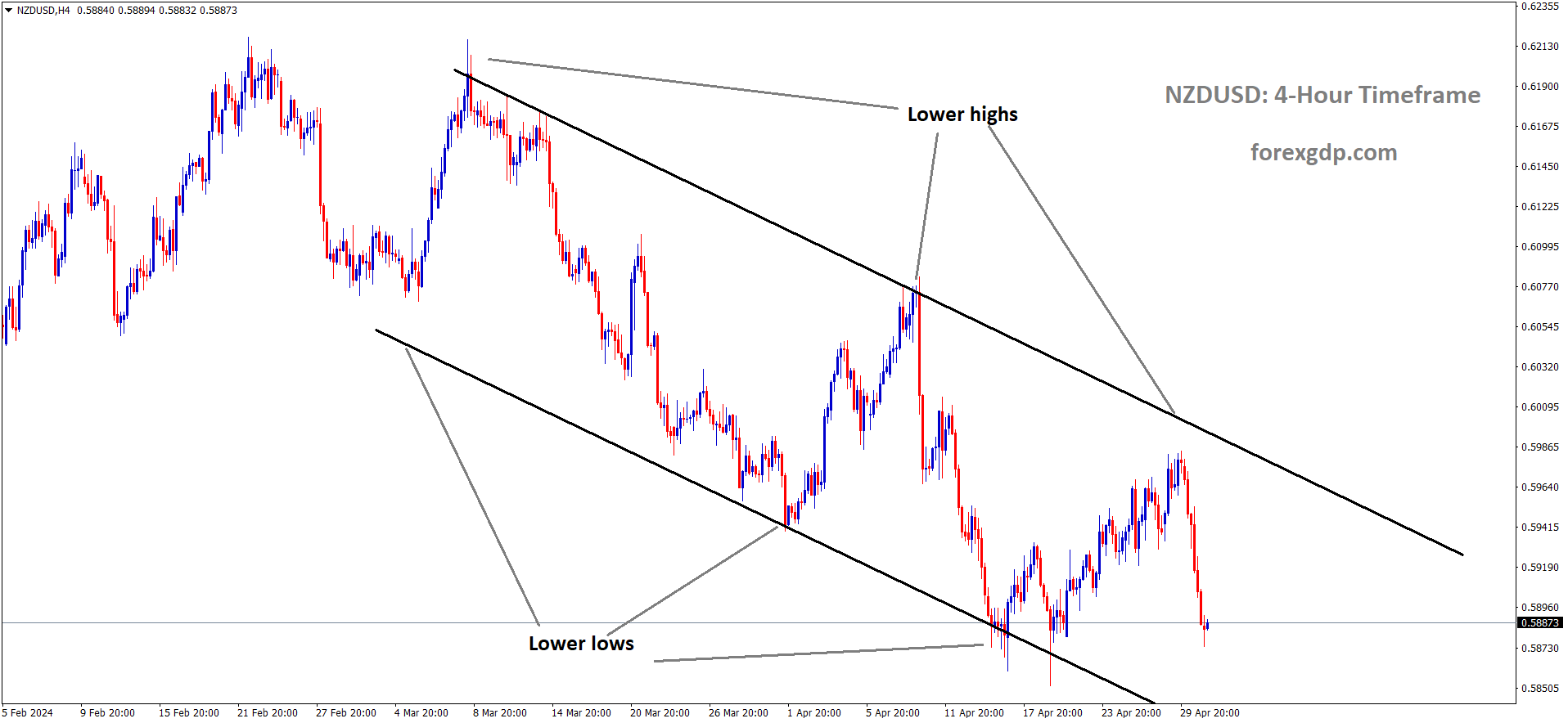
NZDUSD is moving in Descending channel and market has fallen from the lower high area of the channel
The NZD/USD pair is seeing some sellers gathering around the 0.5880 mark during the early Asian session on Wednesday. This decline comes in the wake of disappointing New Zealand employment data. Moreover, there’s a prevailing cautious sentiment in the market ahead of the US Federal Reserve’s interest rate decision, which is providing support for the Greenback at present.
New Zealand’s unemployment rate experienced a notable increase in the first quarter of the year, reflecting the prolonged recession the economy has been enduring amid challenging interest rate conditions. According to Statistics New Zealand’s latest report on Wednesday, the country’s unemployment rate surged to 4.3% in Q1 from 4.0% in Q4, falling short of the market consensus of 4.2%. Additionally, the Employment Change figure recorded a decline of 0.2% in Q1, contrasting with the previous quarter’s 0.4% rise and missing the expected 0.3% increase.
This uptick in the unemployment rate may lead the Reserve Bank of New Zealand (RBNZ) to maintain its current high-interest rate stance for a more extended period to combat inflation. Market expectations suggest that the RBNZ will keep its Official Cash Rate restrictive, with any rate cuts unlikely until 2025.

Meanwhile, the US Federal Reserve is widely anticipated to keep its rates unchanged within the 5.25%–5.50% range during its meeting on Wednesday. Recent data indicating higher-than-expected inflation and strong economic performance in the US have fueled speculations that the central bank might postpone any interest rate adjustments. Investors will closely monitor the tone of the Federal Open Market Committee (FOMC) statement and subsequent press conference. A hawkish stance from the Fed could bolster the Greenback and attract more capital inflows, whereas a dovish tone may lead to USD selling pressure, potentially benefiting the NZD/USD pair.
NZD: Unemployment Rate Hits 4.3%
In the first quarter of the year, the unemployment rate in New Zealand was recorded at 4.0%, marking a decrease from the 4.3% figure reported in the fourth quarter of 2023. This outcome differed from the market expectation of 4.2%. Additionally, the employment change figure showed a decline of -0.20%, indicating a decrease from the 0.40% rise observed in the previous quarter, while the market had anticipated a 0.30% increase.
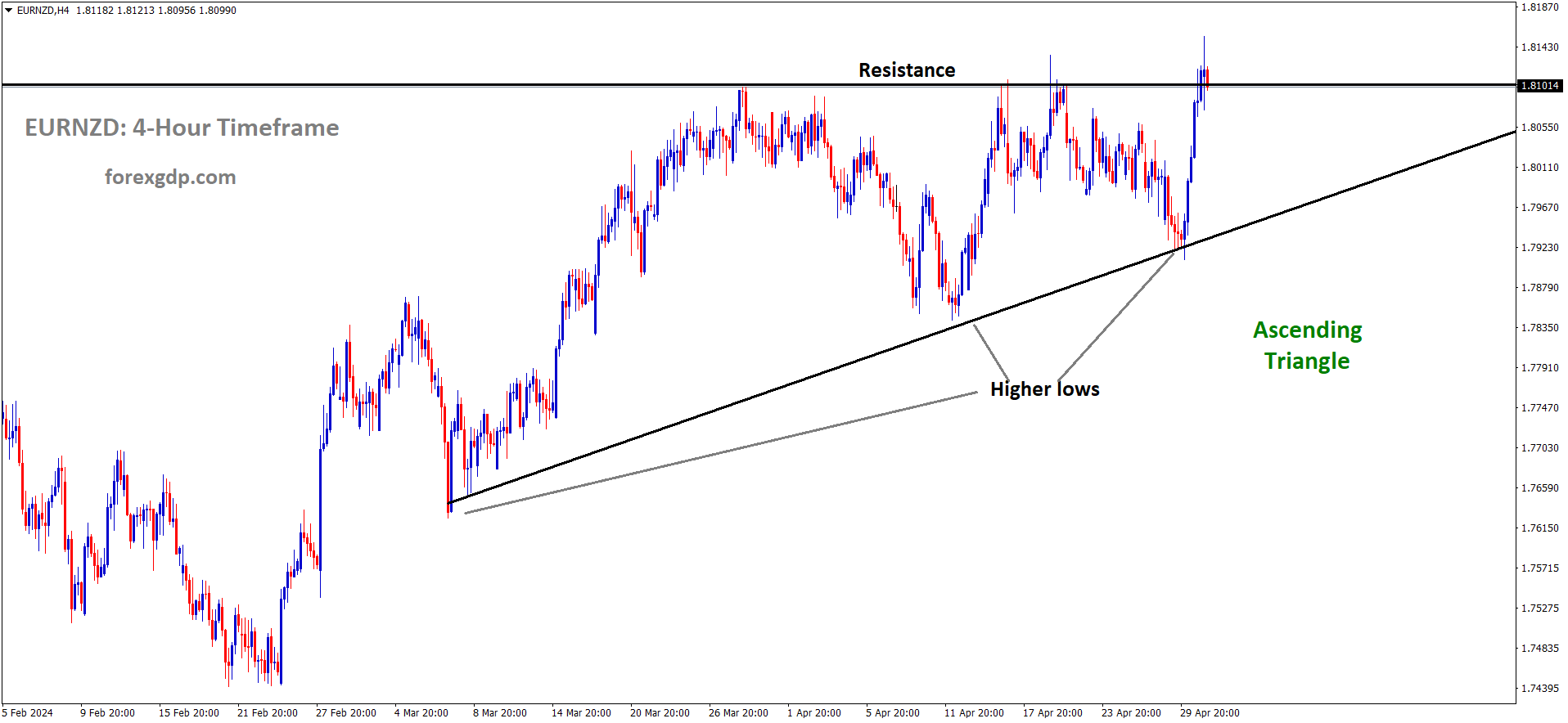
EURNZD is moving in Ascending Triangle and market has reached resistance area of the pattern
Analysts anticipate that the Reserve Bank of New Zealand (RBNZ) will maintain its high-interest rate policy as a means to address the challenges posed by the cooling employment conditions until 2025. This stance by the RBNZ aligns with the projections put forth by industry experts.
The seasonally adjusted unemployment rate stood at 4.3 percent in the March 2024 quarter, marking an increase from 4.0 percent in the previous quarter, as per data unveiled by Stats NZ today.
Over the year, there was a significant rise of 0.9 percentage points in the seasonally adjusted unemployment rate, climbing from 3.4 percent in the March 2023 quarter.
In the March 2024 quarter, the underutilisation rate, which offers a broader perspective on spare labor capacity compared to just unemployment, was recorded at 11.2 percent. This figure was up from 10.7 percent in the previous quarter and 9.1 percent in the corresponding period last year.
According to Deb Brunning, labor market manager, underutilisation encompasses not only those who are unemployed but also individuals seeking more work hours, part-timers desiring full-time roles, and those willing to work but not actively seeking employment.
The rise in both unemployment and underutilisation was particularly pronounced among young people aged 15 to 24, contributing to more than half of the national increase in these labor capacity metrics. Annually, youth unemployment surged by 21,000, and youth underutilisation increased by 44,100 (not seasonally adjusted).
In terms of the employment rate, there was a decline over the year, with the seasonally adjusted rate dropping by 0.6 percentage points to 68.4 percent in the March 2024 quarter. This decline was steeper when viewed annually, down by 1.2 percentage points.
Despite the decline, Brunning highlighted that the employment rate remains relatively high compared to historical data from the full Household Labour Force Survey (HLFS) dating back to 1986.
Regarding youth employment, there was a notable decrease in the number of employed individuals aged 15 to 24, while employment among those aged 30 to 44 increased.

Additionally, statistics on youth not in employment, education, or training (NEET) continue to provide insights into youth engagement with education and the job market. The proportion of youth aged 15 to 24 who were NEET was 12.4 percent in the March 2024 quarter.
On the wage front, while there was growth in labor cost index (LCI) salary and wage rates, the pace of annual growth slowed compared to previous quarters. Average weekly earnings for full-time equivalent employees (FTEs) also saw an uptick, rising by 5.8 percent over the year to the March 2024 quarter, as per the Quarterly Employment Survey (QES).
NZD: Unemployment Hits Three-Year High Amid Job Cuts
In the inaugural quarter of the year, New Zealand’s unemployment metric subsided to 4.0%, presenting a decrement from the antecedent 4.3% quantification witnessed in the fourth quarter of 2023. This divergence from the market’s prognostication of 4.2% underscored a departure from anticipated norms. Furthermore, the employment alteration parameter evidenced a deleterious -0.20% trajectory, juxtaposing the antecedent 0.40% ascension noted in the prior quarter, while market projections had anticipated a 0.30% ascent.
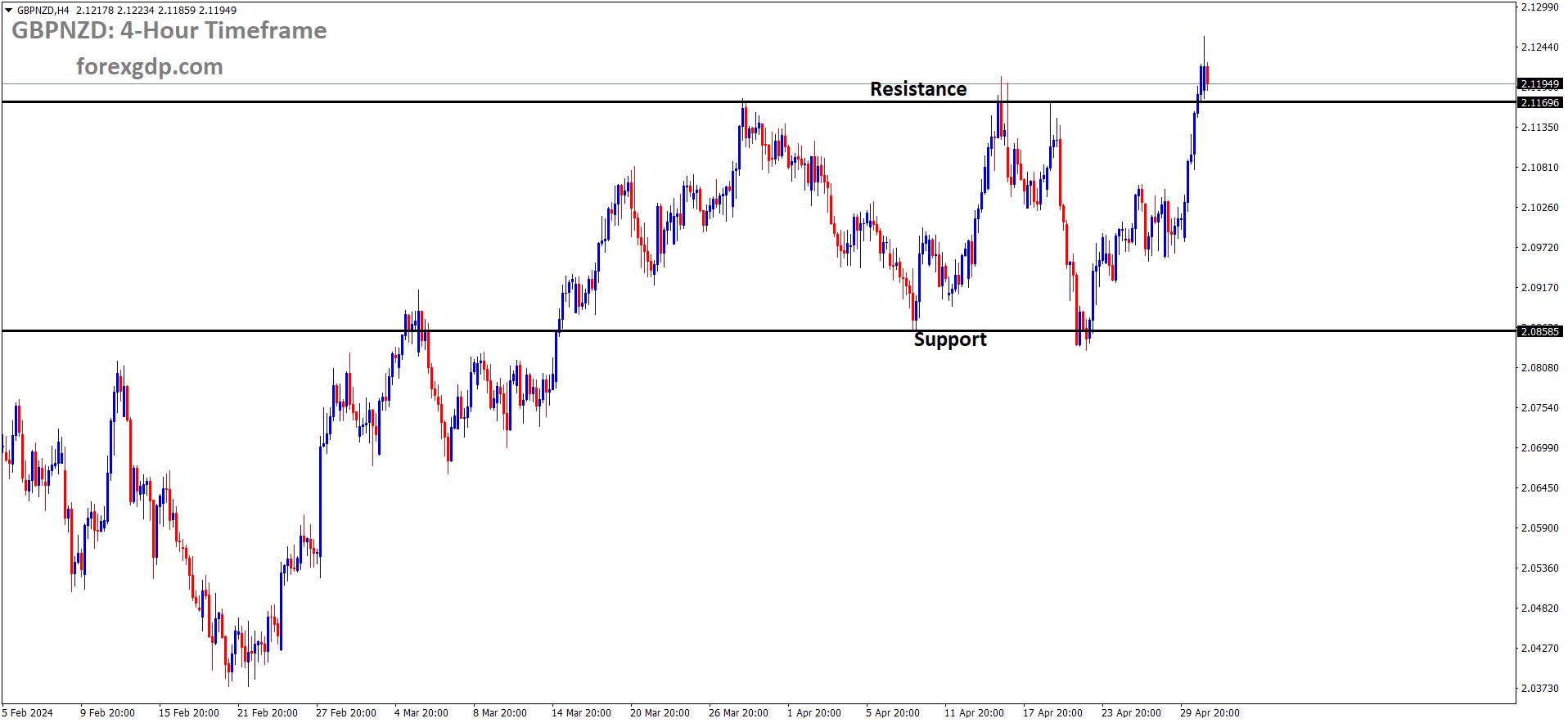
GBPNZD is moving in box pattern and market has reached resistance area of the pattern
In prognosticating the future actions of the Reserve Bank of New Zealand (RBNZ), analysts foresee a perpetuation of its high-interest rate regimen as a strategic response to the prevailing challenges induced by the decelerating employment landscape until the year 2025. This aligns with the anticipatory consensus articulated by industry experts.
According to recently released figures from Stats NZ, the official unemployment rate in the March 2024 quarter stood at 4.3 percent, marking an increase from the previous quarter’s 4.0 percent. Over the course of the year, the seasonally adjusted unemployment rate experienced a significant rise of 0.9 percentage points, up from 3.4 percent in the March 2023 quarter.
In the March 2024 quarter, the underutilisation rate, which provides a broader assessment of spare labor capacity beyond unemployment alone, reached 11.2 percent. This figure reflected an increase from 10.7 percent in the previous quarter and 9.1 percent in the corresponding period last year.
Deb Brunning, the labor market manager, highlighted that underutilisation encompasses not only the unemployed but also individuals seeking additional work hours, part-time workers desiring full-time positions, and those willing to work but not actively seeking employment.
BNZ economist Doug Steel characterized the market’s response to the data as “relatively dovish,” indicating a general sentiment of caution or moderation. The data indicated declines in employment, increases in unemployment, and a decrease in the participation rate during the quarter.
The announcement led to a five-basis-point drop in the key two-year swap rate, influencing home mortgage rates, and a decline in the New Zealand dollar to US58.80c from US58.90c just before the release.

Despite being the highest unemployment rate experienced in the country in three years, the current rate of 4.3 percent is still relatively low by historical standards. Since the inception of Stats NZ’s data collection in 1986, the average unemployment rate has been 5.5 percent, aligning roughly with economists’ expectations for the peak in this economic cycle.
Over the year, both unemployment and total underutilisation experienced notable increases, with youth unemployment and underutilisation contributing significantly to these rises. Youth unemployment rose by 21,000 annually, while youth underutilisation surged by 44,100 (not seasonally adjusted).
The employment rate declined annually due to growth in the working-age population. In the March 2024 quarter, the employment rate stood at 68.4 percent, reflecting a 0.6 percentage point decrease over the quarter and a 1.2 percentage point decrease over the year.
Annual wage cost inflation, as measured by the labor cost index (LCI), was recorded at 4.1 percent, while average ordinary time hourly earnings, measured by the Quarterly Employment Survey (QES), increased by 5.2 percent in the year to the March 2024 quarter.
Economists are closely examining the labor market report to determine its implications for interest rates, although the Reserve Bank no longer formally considers unemployment in its calculations. Today’s labor market data provides crucial insights into the pace of economic slowdown.
Don’t trade all the time, trade forex only at the confirmed trade setups
Get more confirmed trade signals at premium or supreme – Click here to get more signals , 2200%, 800% growth in Real Live USD trading account of our users – click here to see , or If you want to get FREE Trial signals, You can Join FREE Signals Now!


